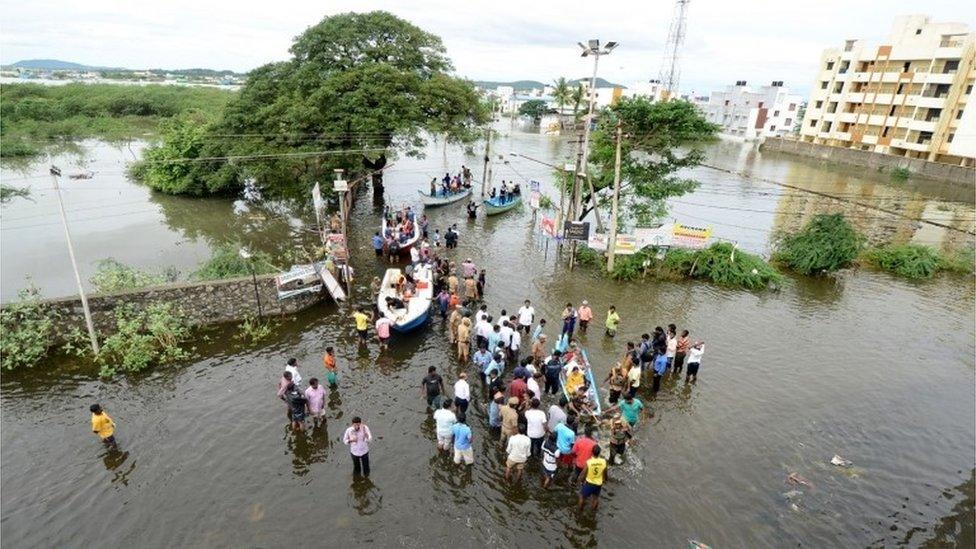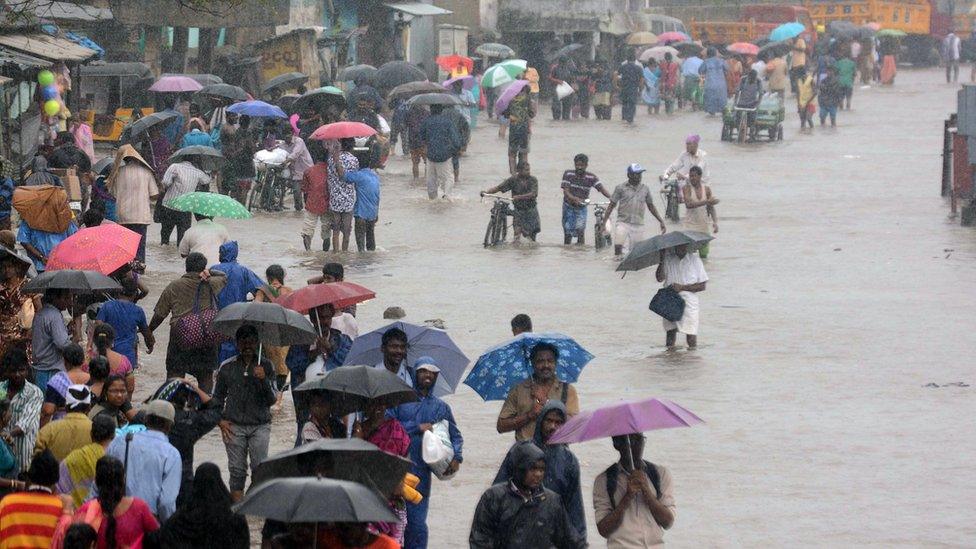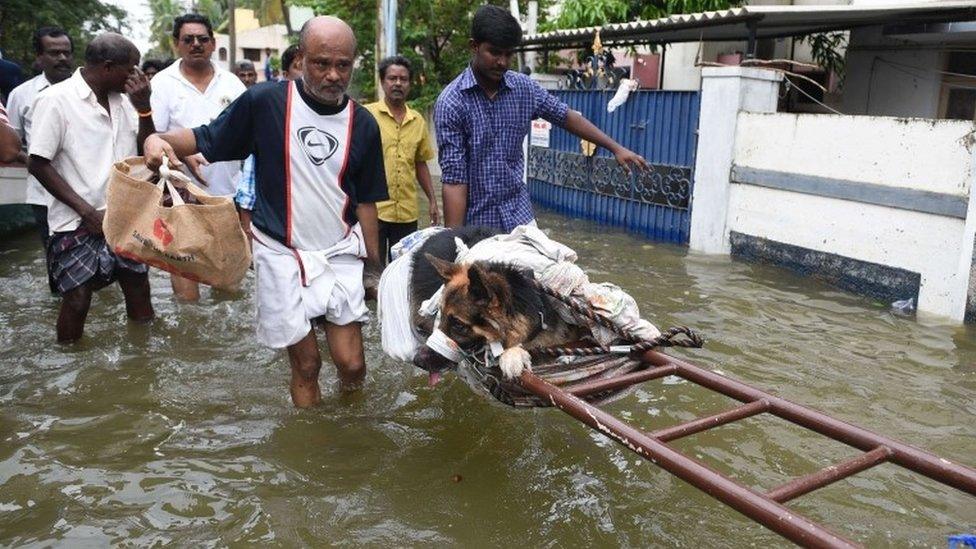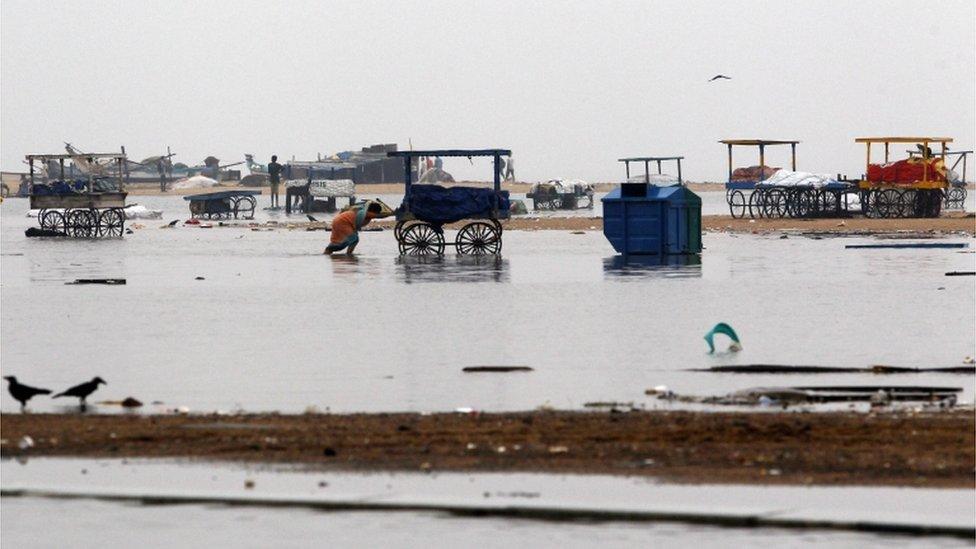How rains paralysed India's Chennai
- Published

Roads resembled waterways, pedestrian subways began filling up with water, schools and colleges were shut
Non-stop rain for nearly a week in the southern Indian state of Tamil Nadu has killed at least 71 people, while the army and air force have been deployed to rescue those still stranded by floods.
One of the worst affected places was Tamil Nadu's capital city, Chennai (formerly Madras), which is slowly limping back to normal. BBC Tamil's K Muralidharan reports on how the rains, which have just halted, impacted the city's residents.
When the rains began on Saturday evening, residents welcomed the respite from Chennai's usual hot and humid weather. But on Sunday, with no signs of the rain letting up, life in the city slowly began turning nightmarish.
The situation grew worse after excess water in reservoirs was released to prevent flooding. That is when the suburban parts of the city began going underwater.
Roads resembled rivers, pedestrian subways began filling up with water, schools and colleges were shut. A holiday was declared until 22 November. The city slowly and surely ground to a halt.
I was one of the fortunate few who lived in an area of Chennai where flood waters did not enter homes.
'Unprecedented horror'
But in many localities, ground floor apartments were flooded.
A woman who lived in the Velachery area described the situation as "unprecedented horror".
"We live in a duplex house and the ground floor was sinking. The furniture was floating. We have never seen anything like this before," she told the BBC.

City residents were of the opinion that the floods showed up the city's preparations to deal with monsoons

Most of the main streets were waterlogged, bringing the city to a standstill
Adding to the woes of the residents was the fact that excess water from the Chembarambakkam lake was released into the already polluted and stinking Adyar river, causing it to overflow.
"It is stinking so much in Manapakkam because of Adyar water that we had to move out. We have to wait until things return to normal," S Sangeetha, a resident of the area, said.
In many areas, the power supply was halted to prevent incidents of electrocution.
Power has now been restored to most areas except for the places which are still submerged.
Political play
As the city struggled to breathe underwater, opposition political parties began pointing fingers at the state government, led by Chief Minister J Jayalalitha.
Television channels loyal to opposition leaders ran almost hysterical coverage of the floods, telling viewers that Chennai was on the brink of all-out collapse and anarchy.
The Jaya TV channel, which is loyal to the chief minister, solely concentrated on relief efforts and images of grateful rescued people.
In general, however, city residents were of the opinion that the floods showed up the city's preparations to deal with monsoon showers.

It was not only humans affected by the torrential rains

Government officials said around 10,000 people had been evacuated from their homes
There has been some relief with the involvement of the army, navy, air force and fire services which rescued people using boats. The air force deployed helicopters to rescue stranded people.
In the midst of the madness, an Indian taxi app service launched a free boat rescue service to help those stranded.
The boats, provided by Ola, which normally organises cars for its users, have been ferrying food and water as well as stranded passengers.
With rains finally stopping, the city is limping back to normal.
And in what will come as further relief to Chennai residents, the meteorology department has said there will be no heavy rain in the coming days.